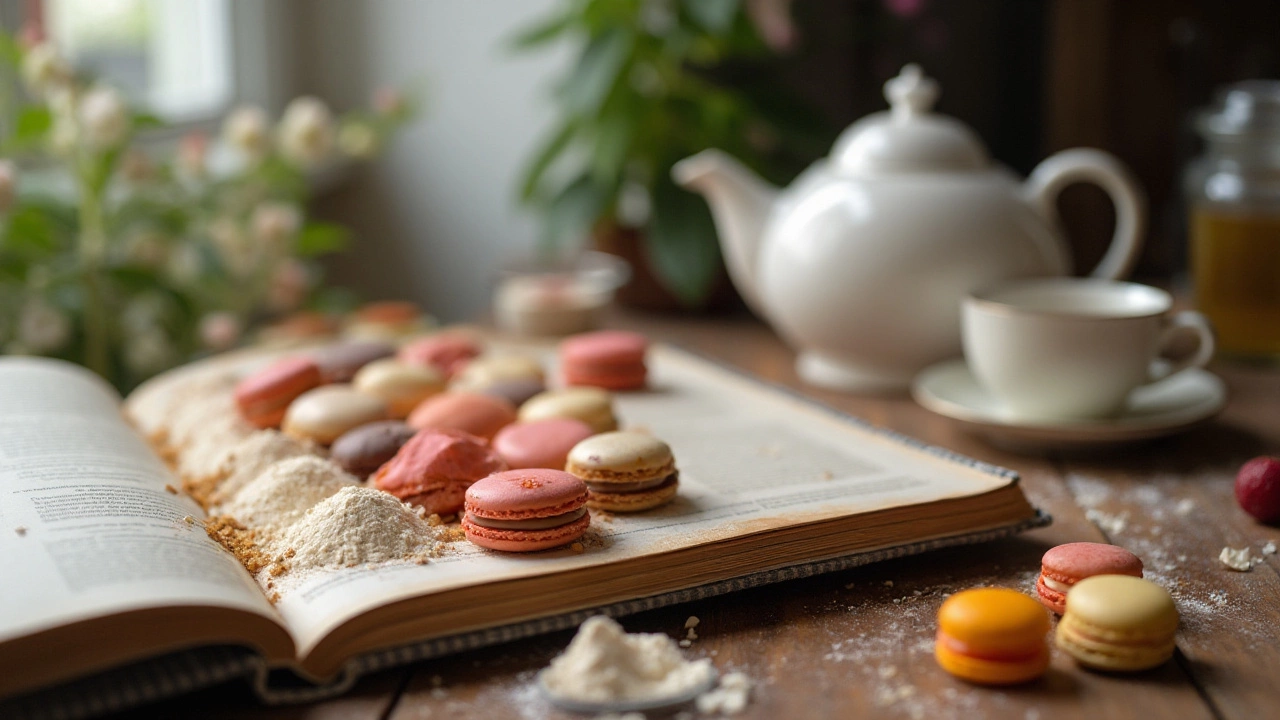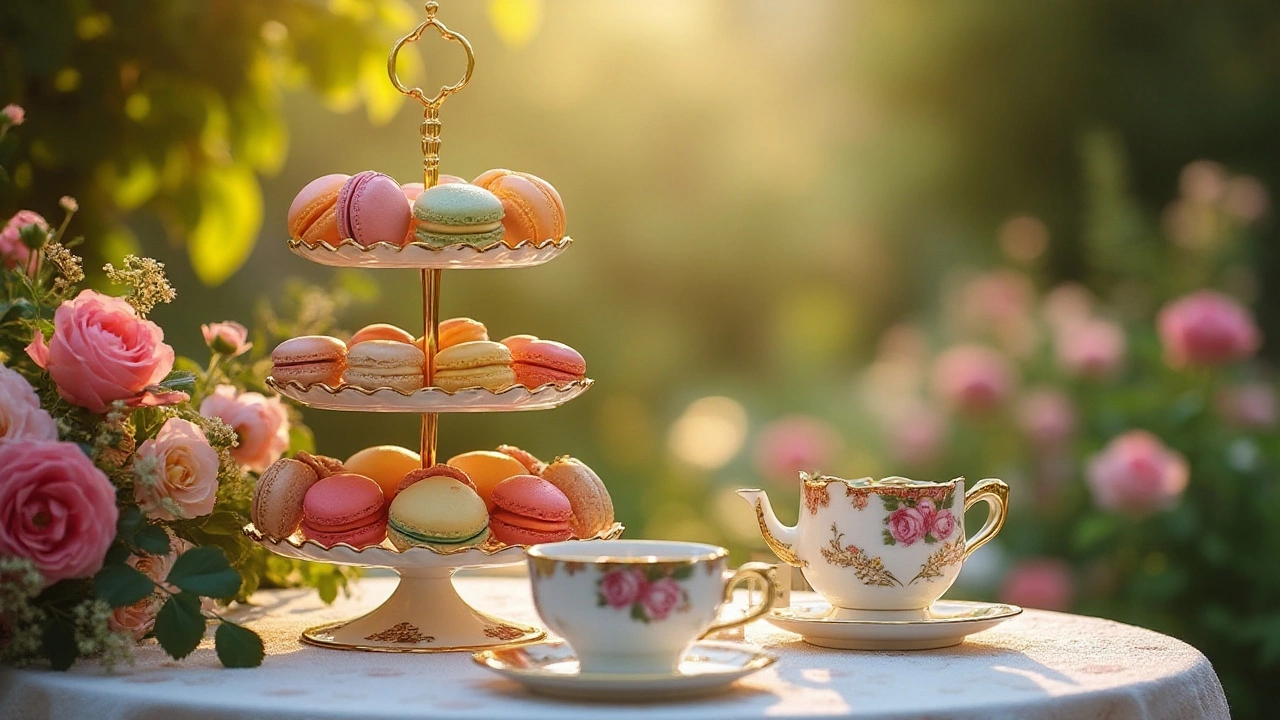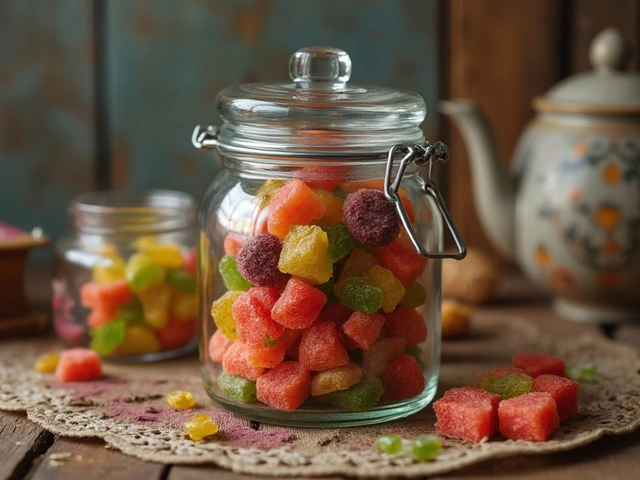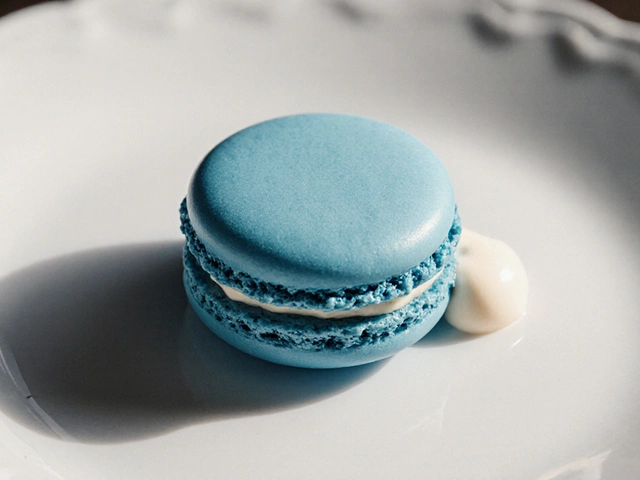Macarons are not just a treat for the eyes, but a delight for the tastebuds as well. These charming little confections have captured the hearts of dessert lovers around the world, known for their crisp shell and delicate filling that comes in an array of delicious flavors.
When it comes to enjoying macarons, many wonder about their calorie content. This is especially important for those watching their diet. Although they may be small, macarons pack a flavorful punch which often makes us overlook their nutritional profile.
In this article, we'll dive into the intriguing details about macarons, from their calorie content and why it varies, to tips on savoring them sensibly. Whether you're a macaron aficionado or a curious newcomer, understanding what's inside these colorful treats helps appreciate them even more!
- The Basics of Macarons
- Macaron Ingredients and Their Impact on Calories
- Comparing Calorie Counts in Different Macaron Flavors
- Tips for Enjoying Macarons without Overindulging
- Healthier Alternatives and Variations
- The Joy and Art of Baking Your Own Macarons
The Basics of Macarons
Macarons are not just confections; they are an exquisite form of art and a celebration of taste. Originating from France, these tiny, brightly colored meringue-based treats have surged in popularity worldwide, symbolizing elegance and sophistication. What sets macarons apart is their unique structure—an airy, delicate shell encasing a luscious and often buttercream-based filling. Crafted from a simple yet precise blend of almond flour, powdered sugar, egg whites, and food coloring, these pastries require a meticulous baking process that rewards patience and precision.
Macarons date back to the Renaissance, introduced by Italian chefs to French royalty. However, it wasn’t until the 1930s that the Parisian patisserie Ladurée made them what they are known for today: a layer of ganache sandwiched between two almond meringue cookies. Historically, these tasty delights have graced the tables of nobility and royalty, making them both a treat and a testament to culinary artistry. Interestingly, they differ significantly from macaroons, which are coconut-based sweets, despite the similarity in names. In fact, the term macaron derives from the Italian 'maccherone' referring to the fine texture these confections possess.
The charm of French pastries lies in their versatility. With flavors ranging from classic vanilla and chocolate to adventurous matcha and rosewater, there seems to be a macaron for every palate. Another fascinating aspect is the attention to color—a visual feast before the gourmand’s indulgence. There is something magical about biting into a macaron; the crisp shell gives way to a melt-in-your-mouth center, a tender creaminess that might be inflected with the tang of raspberry or the rich undertone of pistachio.
"A macaron is never just a cookie; it's a journey of flavors and textures in a single bite," says Pierre Hermé, a renowned French pastry chef known for his inventive approach to the beloved treat.
Despite their simple ingredient list, mastering macarons can be quite a challenge even for skilled bakers. The process hinges on factors like precisely folding the egg whites to achieve the right consistency or ‘macaronage,’ the grace with which the batter settles on the baking sheet, and the oven’s exact temperature to achieve those signature 'feet,' which are the delicate frill at the base of the cookie. The appreciation for macarons extends beyond just eating them; crafting these delicacies is seen as a blend of science and art, making them even more treasured in the culinary arts.
For those interested in diving deeper into the world of macarons, a treasure trove of creativity awaits. Seasoned bakers often experiment with different fillings—think salted caramel or exotic yuzu cream—to develop taste profiles that surprise and delight. This innovation not only keeps macarons modern and relevant but also ensures that they remain lovingly etched in the dessert books of enthusiasts worldwide.
The rise of macaron popularity has led to a host of patisseries specializing in these sweets, sometimes offering them in luxury packaging that complements their premium nature. Keeping them fresh is an art, too, as they are best enjoyed at room temperature, where the flavors can truly sing. Whether bought from a local bakery or crafted in the kitchen, macarons bring a little bit of France into your life with every bite—a miniature escape to Paris, one might say!
Macaron Ingredients and Their Impact on Calories
When we think of macarons, it's easy to get lost in a world of pastel colors and exotic flavors. But beneath their delightful exterior lies a science of ingredients that brings these magical confections to life. The chief components of a macaron are ground almonds, egg whites, and sugar, each contributing to the dessert’s texture, flavor, and calorie content. The almonds used in macarons are typically ground into a fine almond flour or meal, which serves as the base. Almonds are nutrient-rich, providing healthy fats and proteins, but they also bump up the calorie count due to their high fat content. Egg whites are another essential ingredient, providing the protein necessary to achieve the characteristic meringue-like shell. Sugar, the most prominent component, not only adds sweetness but also assists in stabilizing the meringue and forming the perfect crispy shell. These three ingredients are whipped to a perfect consistency, creating that smooth macaron surface we all adore.
In addition to basic ingredients, macarons often include flavorful fillings such as buttercream, ganache, or fruit jams. These additions significantly impact the caloric content. A buttercream filling usually consists of butter, sugar, and sometimes cream, making it rich and calorie-dense. Ganache, made from chocolate and heavy cream, offers a decadent experience but likewise adds more calories. Fruit jams can sometimes present a lighter alternative, though they also contain high sugar levels. According to respected pastry chef Pierre Hermé, known for his distinct macaron creations, 'a macaron’s flavor should be powerful yet subtle, a balance of taste and finesse.'
| Ingredient | Calories per 100g |
|---|---|
| Almond Flour | 575 |
| Sugar | 387 |
| Egg Whites | 52 |
| Buttercream Filling | 577 |
| Chocolate Ganache | 430 |
| Fruit Jam | 240 |
Understanding the nutritional aspects of these ingredients can lead to more mindful consumption of macarons. The varying components can place a macaron anywhere between 70 to 120 calories. While each ingredient individually has its benefits and roles, the combination creates a pastry that is more than the sum of its parts. Taking the time to appreciate the craftsmanship involved in balancing these ingredients might just add to the enjoyment. For those who crave a guilt-free indulgence, exploring macarons with lighter fillings or experimenting with a reduced sugar recipe could be an interesting journey. After all, macarons are not just a dessert; they represent a delicate art form that deserves to be savored with insight and awareness.

Comparing Calorie Counts in Different Macaron Flavors
When it comes to macarons, one of the most delightful aspects is the rainbow of flavors available to satisfy just about any sweet tooth. But with variety comes a range of calorie counts as well. From classic vanilla to adventurous matcha or caramel sea salt, each flavor of macaron could tip the scale slightly differently. Understanding how the ingredients alter the calorie content can help you make informed choices, especially if you're trying to watch your intake while enjoying these little French pleasures.
Typically, a standard macaron ranges from 70 to 120 calories each. The primary factors that influence the calorie count are the filling and flavoring. A simple vanilla or chocolate macaron, which might have a ganache filling, tends to sit on the lower end of the scale. On the other hand, nut-based or creamy, rich flavors like pistachio, hazelnut, or salted caramel might add a few extra calories due to denser and richer filling compositions.
Let's take a closer look at some popular flavors. A basic raspberry macaron with berry puree often brings a tart freshness alongside moderate calorie content, usually around 80 calories due to the natural sugars in the fruit. Compare this to a decadent dark chocolate macaron, known to reach up to 100 calories, given the extra butter and ganache used to formulate that silky texture. Each ingredient from heavy cream to nuts adds layers of flavor, but also a few more calories.
To better understand, here is a simple comparison for a few popular choices:
| Flavor | Calories (approx.) |
|---|---|
| Vanilla | 80 |
| Raspberry | 80 |
| Caramel Sea Salt | 100 |
| Pistachio | 110 |
| Chocolate | 100 |
Individual bakeries may add unique twists to their macarons, altering these numbers slightly with proprietary ingredients. As macarons are a versatile pastry, chefs often tinker with them to create limited editions or seasonal specials that could come with a higher calorie price tag. To enjoy them without guilt, consider balancing with portions or sharing a selection of flavors with friends. Single bites of different flavors can lend a broader experience without the need to indulge excessively.
According to an insight from Le Monde's food critic Jules Renault, "The beauty of macarons lies in their elegance and explosion of flavors. Yet, their hidden beauty is revealed when savored slowly, appreciating the journey of each flavor. This means savoring one or two is sometimes more rewarding than an entire box." So, while decadence is a macaron's calling card, with a bit of knowledge, you can tailor your indulgence to fit your lifestyle, enjoying the experience just as much.
Tips for Enjoying Macarons without Overindulging
Savoring the sweet pleasures of macarons without going overboard can be quite the challenge, especially when these delightful treats are so easy to devour. It’s all about striking the right balance between indulgence and moderation. For those who find it hard to resist the charm of macarons, there are some savvy strategies to keep in mind. Setting personal limits before indulging can make a big difference; try placing a certain number of macarons on a plate instead of bringing the whole box to the table. This simple shift in approach can help you tune into your body's hunger signals, making it easier to enjoy each bite mindfully.
Sometimes, it helps to pair macarons with a soothing beverage, such as a cup of fragrant tea or coffee, which can enhance the experience without the impulse to munch mindlessly. This not only slows down the pace but also introduces a lovely ritual to your snacking, giving you time to appreciate the complex flavors each macaron offers. For those concerned about dietary restrictions, picking macarons with less sugary fillings, like dark chocolate or fruit, may help in managing sugar intake. These variations can still provide that satisfying sweetness but with a potentially lower calorie count.
Consider the timing of your macaron indulgence too. Enjoying them as a special treat during social gatherings or celebrations can make them more meaningful and less of a daily habit. Sharing macarons with friends and family can also transform a solitary indulgence into a shared experience, promoting connection. Did you know that taste perception can be heightened when shared? It’s true; studies have shown that sharing food can enhance its taste and enjoyment.
"The shared experience of eating can significantly enhance our appreciation of food, often leading to greater satisfaction." - Journal of Food Quality and Preference
Remember too that quality over quantity can amplify your macaron enjoyment. Choosing a high-quality baker or even experimenting with making your own macarons at home can lead to richer, more enjoyable experiences. Home-baked macarons not only allow for creativity but also the chance to control the ingredients, providing a possibly healthier alternative. This can be a fun project to embark on with friends or family! And if you’re counting calories, keep track of their intake similar to other desserts. Eating healthily doesn’t mean eliminating treats; it's simply about balance.
Let’s not forget the importance of truly savoring every bite. Eating slower and focusing on the texture, sweetness, and aroma will make each moment more memorable. Being present in these little indulgences can make them seem larger than life, allowing you to find joy in moderation. Enjoying macarons without overindulging is all about mindful choices and moments, ensuring that each treat remains a joyful indulgence worth the anticipation.

Healthier Alternatives and Variations
For those of us who cherish the sweet taste of macarons but worry about calories or sugar intake, there are delightful variations to consider. Macarons, known for their sweet punch, can indeed be tweaked without losing their allure. One way of going about this is by using alternative sweeteners. Natural options like stevia or monk fruit offer sweetness without the added calories and sugar spikes. Both these sweeteners are great for those who keep a watchful eye on their sugar consumption. It's important to experiment as they might alter the taste subtly, which could be interesting for adventurous palates more willing to explore variations in flavors.
Another way to make macarons healthier is by choosing nut flours that provide added nutrition, like walnut or hazelnut flour, instead of the traditional almond flour. This alteration not only brings a new layer of flavor but also offers a different nutritional profile rich in healthy fats and omega-3s. Encouragingly, experimenting with the fillings can also yield healthier options. Consider fillings that are fruit-based with less sugar or homemade jams sweetened with apples or other fruits. Using unsweetened cocoa powder or dark chocolate for a filling can still satisfy chocolate cravings while providing some antioxidants, making the macaron not just about calories but about nutrients too.
If you're feeling daring in the kitchen, you might try creating a vegan version of the macaron. Traditional macarons rely heavily on egg whites to achieve their characteristic texture, but aquafaba—a byproduct of canned chickpeas—has become a magical ingredient for vegan bakers. This liquid whips up similarly to egg whites, bringing the same airy quality to the macarons. Be aware that using aquafaba might result in some trials and initial mistakes, but the eventual results are often just as satisfying, providing a cruelty-free and healthier alternative.
"Baking is both a science and an art. By adjusting ingredients thoughtfully, you can transform classic recipes into healthier versions without sacrificing flavor," says a renowned pastry chef.
For more health-forward indulgences, consider reducing the portion size by experimenting with mini macarons. These bite-sized versions are wonderful for portion control, allowing you to enjoy these French pastries without the guilt. They often lead to a mindful eating experience because of their diminutive size, teaching us a little about savoring each bite. Moreover, the satisfaction of creating your variation is much greater among chefs and novices alike, offering a personal touch to these beloved treats.
Those watching their caloric intake should pay careful attention to labels when purchasing macarons from stores or cafes. Packaging often provides information on calories and ingredients, helping make informed choices. Additionally, some specialty bakeries now highlight healthier versions of macarons, reflecting growing consumer demand. This trend is especially prominent in health-conscious communities, where dessert isn't just about taste but also about balance and wellness. Seasonal fruits can also offer a refreshing twist, so visit local markets for inspiration, using fresh, organic ingredients as fillings to create refreshing macaron variations that surprise and delight.
The Joy and Art of Baking Your Own Macarons
There's something magical about creating macarons right in your own kitchen. While they have a reputation for being tricky to master, the process is, in fact, a delightful journey filled with learning and satisfaction. Baking your own macarons allows you to explore an array of flavors, colors, and creativity that store-bought versions can rarely capture. The thrill begins with the basics—choosing the right ingredients. Proper almond flour, egg whites, and sugar are essential for achieving that characteristic melt-in-your-mouth texture. Being precise with measurements and gentle with your whisk becomes almost meditative, pulling you into a tranquil rhythm as you mix.
As you dive into baking, knowing the baseline temperature of your kitchen is surprisingly critical. The temperature affects the meringue and the drying phase before baking, which highlights the importance of patience. Watching your batter transform into perfectly piped circles is like watching art form under your hands. As they bake, macarons require your observant eye since these delicate pastries can shift from underdone to overbaked in moments. Perfecting the macaron's iconic "feet"—those ruffled edges—is both a science and an art form. Baking guides often liken this meticulous process to a culinary ballet.
"Baking is an art, but it’s also a science, and Joy of Baking emphasizes balancing these elements." - Joy Wilson
Once baked, the creativity truly begins. Deciding on fillings is where you can let your taste buds run wild. Traditional almond macarons can be paired with ganache, buttercream, or tart fruit curds to contrast their sweetness. At this stage, the opportunity to experiment with colors and flavors opens. Mixing matcha powder into the shell or infusing exotic spices into fillings adds personal flair. The possibilities seem endless when it comes to playing with textures and tastes, allowing the baker to customize each batch.
Baking your own macarons isn't just about crafting tasty treats; it’s about embracing a moment where patience meets indulgence. It's a practice of appreciating details and relishing the outcome of your hard work. Beyond consumption, sharing homemade macarons with friends and family can turn into a warm tradition, sparking conversations about favorite flavors, tips, or even amusing baking mishaps. Exploring this delightful pastry allows you to bond over a shared love for sweet creations, broadening the enjoyment beyond just taste. Whether you're baking for a special event or just to treat yourself, creating macarons becomes a rewarding ritual filled with learning and joy.





